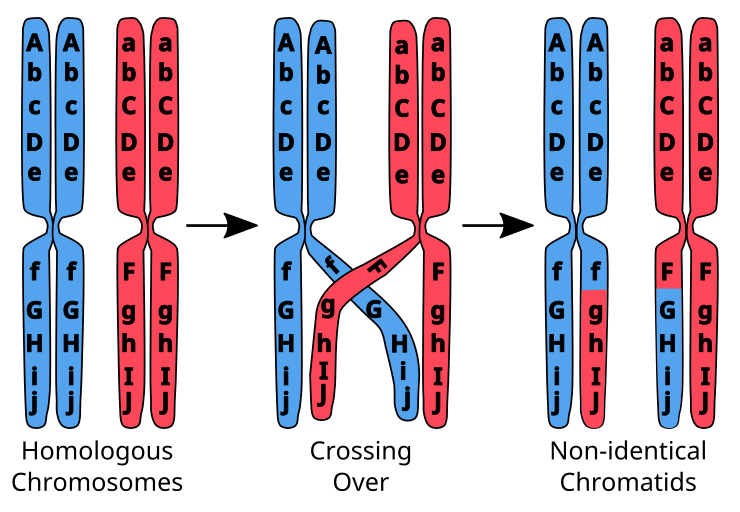- Explain the difference between fertilization and meiosis, haploid and diploid; somatic cell and gamete; and autosome and sex chromosome.Explain what is meant by a homologous pair of chromosomes, and tell what happens to homologous pairs during meiosis.
- Use examples to illustrate the relationship between meiosis and the life cycles of organisms.
- List the phases of meiosis, and briefly explain the major events that occur in each.
- Cite five differences between meiosis and mitosis.
- Discuss the relationship between sexual reproduction and genetic variability.
Contents [hide]
Introduction: Meiosis
Meiosis is a process of nuclear division that reduces the number of chromosomes in the resulting cells by half. Thus, meiosis is sometimes called “reductional division.” For many organisms the resulting cells become specialized “sex cells” or gametes. In organisms that reproduce sexually, chromosomes are typically diploid (2N) or occur as double sets (homologous pairs) in each nucleus. Each homolog of a pair has the same sites or loci for the same genes. You might recognize that you have one set of chromosomes from your mother and the remaining set from your father. Meiosis reduces the number of chromosomes to a haploid (1N) or single set. This reduction is significant because a cell with a haploid number of chromosomes can fuse with another haploid cell during sexual reproduction and restore the original, diploid number of chromosomes to the new individual. In addition to reducing the number of chromosomes, meiosis shuffles the genetic material so that each resulting cell carries a new and unique set of genes in a process of independent assortment.
As in mitosis, meiosis is preceded by replication of each chromosome to form two chromatids attached at a centromere. However, reduction of the chromosome number and production of new genetic combinations result from two events that don’t occur in mitosis. First, meiosis includes two rounds of chromosome separation. Chromosomes are replicated before the first round, but not before the second round. Thus, the genetic material is replicated once and divided twice. This produces half the original number of chromosomes.

Crossing over between chromatids of homologous chromosomes increases genetic diversity during meiosis I. Synapsis occurs during prophase I as the homologous chromosomes begin to pair up. Credit: Jeremy Seto (CC-BY-NC-SA)
Second, during an early stage of meiosis each chromosome (comprised of two chromatids) pairs along its length with its homolog. This pairing of homologous chromosomes results in a physical touching called synapsis, during which the four chromatids (a tetrad) exchange various segments of genetic material. This exchange of genetic material is called crossing-over and produces new genetic combinations. During crossing-over there is no gain or loss of genetic material. But afterward, each chromatid of the chromosomes contains different segments (alleles) that it exchanged with other chromatid.
Stages and Events of Meiosis

Stages of Meiosis. Credit: Ali Zifan (CC-BY 4.0)
Although meiosis is a continuous process, we can study it more easily by dividing it into stages just as we did for mitosis. Indeed, meiosis and mitosis are similar, and their corresponding stages of prophase, metaphase, anaphase, and telophase have much in common. However, meiosis is longer than mitosis because meiosis involves two nuclear divisions instead of one. These two divisions are called Meiosis I and Meiosis II. The chromosome number is reduced (reductional division) during Meiosis I, and chromatids comprising each chromosome are separated in Meiosis II. Each division involves the events of prophase, metaphase, anaphase, and telophase.
Advanced Video Overview of Meiosis
Abnormalities arising during meiosis



